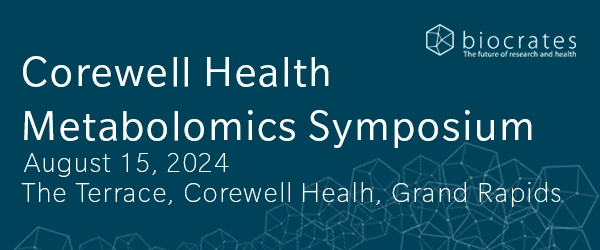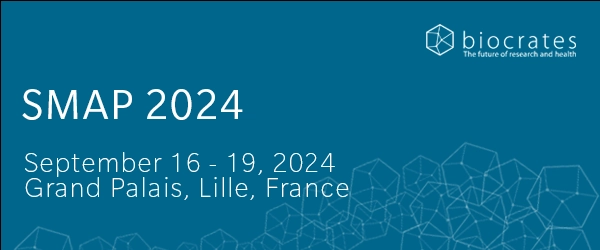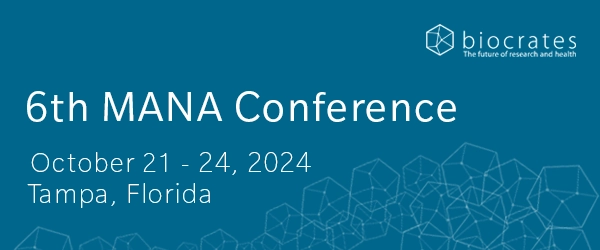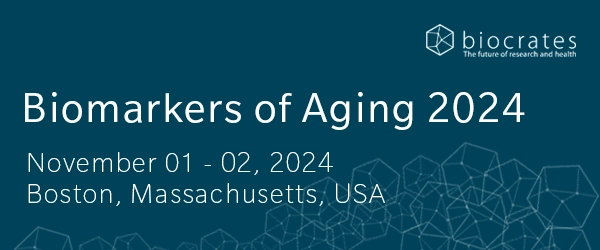In a ‘nutcell’
Cell culture metabolomics is an important tool in pharmacology and drug development since it allows researchers to gain a more comprehensive understanding of the complex metabolic processes that occur within cells. Equipped with this knowledge, researchers can identify new drug targets, optimize drug dosing regimens, evaluate the efficacy and safety of drugs including their toxicity profile, understand drug metabolism, and ultimately develop safer and more effective therapies for a wide range of diseases and conditions.
How metabolomics can help to reduce costs in drug development
What to consider when conducting cell culture metabolomics
Advantages for pharmaceutical R&D
How metabolomics can be applied in pharmacology
Drug discovery and basic research
Preclinical drug development
One step closer to clinical trials
Drug repurposing
How metabolomics can help to reduce cost of drug development
The pharmaceutical industry is one of the largest sectors of the global economy, creating drug revenues of more than $1,000 billion in 2020 alone (Mullard 2022). Research and development (R&D) investments range from $0.9 billion to $2.8 billion for each new drug, with costs expected to rise over time (Simoens et al. 2021). The high costs of failure throughout the drug development process are a significant issue, especially given the extremely low approval rate: only 9% in phase 1 and just 46% even in phase 3 clinical trials (Fogel 2018).
Although large pharmaceutical businesses may endure this loss, smaller companies can experience serious financial problems. For example, biopharma company NewLink Genetics was forced to fire 43% of its entire workforce (100 people) following the failure of an immunotherapeutic agent in phase 3 trial (Lo 2017). Recently, the US Food and Drug Administration (FDA) has committed to exploring alternative methods to help reduce costs and drive results, such as the use of cutting-edge cell cultures to replace laboratory animals in developing new drugs (Nuwer 2022).
In recent years, metabolomics has emerged as a powerful tool in the pharmaceutical industry for biomarker discovery, drug target identification, mechanism of action studies, safety assessment, and personalized medicine (Wishart 2008). Metabolomics is the comprehensive analysis of small molecule and lipid metabolites in biological systems, providing excellent snapshots of a patient’s metabolic profile from biofluids, tissues, stem cells, cell culture lysates, and even cell culture supernatants. Cell culture metabolomics can contribute to pharmacological studies along the entire drug discovery pipeline.
What to consider when conducting cell culture metabolomics
Cell culture metabolomics is a valuable tool for drug discovery and development. The main objective of cell culture metabolomics is to examine as many metabolites as possible in a defined cell state or condition, and provide a snapshot of metabolic status. This is achieved by halting all enzymatic and chemical reactions to prevent them from affecting results (Halama 2014).
Metabolite concentrations in humans may differ from those in animal or cell culture models, but the broad trends are widely preserved (Wishart 2008, Kleinstreuer et al. 2011) including in the case of the blood-brain barrier (Schultz 2015). Standardization is crucial in metabolomic analyses, because several factors, such as the culture conditions, cell density, sample size, and culture media composition, may affect the results (Fritsche-Guenther et al. 2022). To get the best results, it is useful to consider some important technical parameters:
- Cell number – we recommend starting analysis with a pellet of approximately 1-3 x 106 cells, but this depends on the cell line and concentrations of metabolites of interest and should be tested before the actual investigation begins.
- Sample collection – the nature and the concentration of metabolites in a sample should remain as unchanged as possible from the time of sampling. It is crucial to ensure the best possible quenching and harvesting technique to stop further breakdown of metabolites by intracellular enzymes and changes in sample composition. When working with adherent cell cultures, cells must be detached by scraping. This is a stressful procedure for the cells and may change the metabolome, so it is important to work quickly and cool the cells (Fritsche-Guenther et al. 2022).
The use of trypsin or other enzymes for harvesting is not recommended since there is a high a risk of cell membrane injury and metabolite leakage which can affect the metabolome (Batista et al. 2019). For suspension cell cultures and 3D cell cultures such as spheroids, cells can be easily collected through centrifugation.
- Metabolite extraction – extraction method is a crucial factor in reliable metabolite quantification. Andresen et al. (2022) compared ten extraction protocols in four human-derived sample types (liver tissue, bone marrow, HL60, and human embryonic kidney cells) for metabolome analysis. The results showed that extraction efficiency and reproducibility vary greatly between methods, tissues, and metabolite chemical groups. Metabolite levels obtained by mass spectrometry can also be altered significantly by washing the samples before extraction and adding acid to the methanol extraction solvent (Ser et al. 2015).
- Special sample types – in addition to cell lysates and cell culture supernatants, various materials are suitable for metabolomic analyses, including embryonic stem cells (Kleinstreuer et al. 2011, Schultz et al. 2015), induced pluripotent stem cells (Fritsche-Guenther et al. 2022), tissue cultures (Batista et al. 2019), organs-on-a-chip, as well as 3D cell cultures like spheroids and organoids (Artati et al. 2019, Andresen et al. 2022)
Advantages for pharmaceutical R&D
Cell culture metabolomics offers many advantages in pharmacological studies:
- Controlled experimental conditions – cell culture metabolomics allows for the study of metabolites in a controlled experimental environment, free from the variability of in vivo systems. This makes it easier to manipulate and control experimental conditions, which supports more accurate and reproducible results.
- High-throughput screening – cell culture metabolomics can be used for high throughput screening of drug candidates, allowing for the rapid identification of compounds with specific metabolic effects. This can save time and resources in the drug discovery process.
- Easy sample preparation – cell culture metabolomics requires only a small amount of sample material. Preparation is relatively straightforward compared to other sample types. This makes it a cost-effective and efficient method for analyzing metabolites.
- Reproducibility – because cells can be cultured under controlled conditions, experiments can be easily replicated, leading to increased confidence in the results.
- Potential for personalized medicine – cell culture metabolomics can be used to study the metabolic profiles of individuals, which can be used to develop personalized medicine approaches that are tailored to the unique metabolic needs of patients.
- Lower cost – cell culture metabolomics is less expensive than in vivo studies. There are no animal costs, and the cell culture equipment and reagents are generally less expensive than those required for in vivo studies.
- Ethical considerations – cell culture metabolomics may decrease the use of animals as well as patient harm.
How metabolomics can be applied in pharmacology
Metabolomics has been used to create a more comprehensive understanding of metabolism and disease- or treatment-related metabolic changes. In pharmacology, metabolomics has taken center stage in gaining an in-depth understanding of underlying metabolic processes and identifying the mechanism of action (MoA) of a drug. Metabolomics applications have the potential to accelerate drug discovery and development at several stages which are critical for progressing good drug candidates through the development process.
Drug discovery and basic research
In the early phases of drug development, potential drug targets may be identified from data derived from phenotypic screening or genetic mutation analysis, without an in-depth understanding of their biochemical features. This makes it more challenging to understand the MoA and analyze target engagement. Metabolomics is well suited to investigating endogenous enzyme substrates in this context and has an important role in biomarker discovery and screening studies.
For example, metabolic characterization of same-patient-derived cell lines from primary colon adenocarcinoma and its metastatic derivatives showed that the metastatic cell lines were selectively vulnerable to the inhibition of cystine import and folate metabolism, two key pathways in redox homeostasis. As a result, two proteins from these pathways were identified as potential therapeutic targets for combating metastatic colorectal cancer (Tarragó-Celada et al. 2021).
Metabolomics has also been used to assess the effects of chemical exposure on female germ cells and infertility in a human ovarian tissue culture model (Hao et al. 2018). Furthermore, Kleinstreuer et al. used the supernatant of human embryonic stem cells to predict the teratogenic effect of known chemicals. They achieved 73% accuracy, which was consistent with their animal data (Kleinstreuer et al. 2011).
Preclinical drug development
To achieve successful drug development, researchers must obtain accurate information on pharmacokinetics and metabolism as early as possible. This information directly affects the compound’s success or failure in the long run. Early screening of absorption, distribution, metabolism, and excretion (ADME) has significantly reduced the percentage of drugs that fail in clinical trials. Preclinical ADME aims to identify and reject weak drug candidates early in the drug development process, so that resources can be focused on promising candidates.
The distinct metabolic characteristics of cancer cells offer promising opportunities for drug development, particularly in precision medicine. However, surprisingly few new drugs have been developed for therapeutic targeting of cancer metabolism to date. One of the first studies to evaluate the utility of pharmacological inhibition of glutamine transport successfully inhibited cell growth and proliferation both in vitro and in vivo (Schulte et al. 2018).
Using metabolomics, Caiola et al. (2016) demonstrated that there are distinct metabolic responses induced by mutant and wildtype KRAS in non-small cell lung cancer (NSCLC) cells after pharmacological impairment of PI3K signaling by inhibitor candidates. Another study targeting glycolytic flux in hematologic cancer cell lines showed the antitumor activity of the drug candidate both as monotherapy and in combination with some common therapeutics and verified these results in vivo (Curtis et al. 2017).
In addition to these current advancements, an emerging research area known as activity metabolomics suggests that metabolomics may also directly identify bioactive metabolites involved in the MoA (Alarcon et al. 2022). For example, indole-3-propionic acid is an unusual antibiotic that combines anti-inflammatory and antioxidant effects (Negatu et al. 2020). Metabolomics is also being used to research the effects of nutrition on pharmacological therapy. For example, analysis of the amino acid and central carbon metabolism of breast cancer cells treated with palbociclib, letrozole, and xenoestrogens revealed that dietary estrogens influence the metabolic and anti-oncogenic drug response (Warth et al. 2017).
One step closer to clinical trials
The translational gap between drug discovery and clinical development is one of the main bottlenecks for drug development. This can reduce the overall success rate of pharmaceuticals during clinical development, despite significant investments in drug development. Analyzing the metabolic effects of drug candidates in vitro and in vivo may offer a better understanding of their metabolic changes, MoA, and potential toxic effects before clinical trials.
Metabolomics is a useful tool for investigating the MoA and therapeutic response of drug candidates. For example, a study monitoring over 750 intracellular metabolites revealed that metabolism played a direct role in modulating the response to antibiotic stress, leading to cell death or escape. The metabolic changes were found to be drug- and dosage-specific. In a subsequent study, the same team developed a method to categorize the MoA of antimicrobial substances by quick and meticulous metabolic profiling (Zampieri et al. 2018).
Another study investigated the MoA of destruxins, suggesting that the underlying mechanism of resistance was not efflux through ABC transporters, commonly known as chemoresistance mediators, but cholesterol-mediated plasma membrane re-organization (Heilos et al. 2018). In erlotinib-resistant pancreatic cancer cells, changes in acetyl‑CoA‑associated and phosphatidylcholine metabolism (Lee et al. 2017), ornithine decarboxylase (ODC) and its major metabolite putrescine were identified as contributing factors. Putrescine administration was found to reverse the effect (Jang et al 2017).
Recently, nanomaterials have become essential tools in healthcare, with therapeutic uses ranging from contrast media in imaging to vehicles for the transport of drugs and genes into tumors. However, the toxicity of nanoparticles raises concerns about their environmental and societal impact. Metabolomics has been used to study the effects of some well-characterized nanomaterials with various chemical compositions, sizes, and chemical surface modifications.
These studies identified relationships between molecular pathways, physico-chemical properties, and toxicological endpoints (Bannuscher et al. 2020a, Karkossa et al. 2021). Metabolic profiling of nanomaterial-treated cell lines resulted in time- and concentration-dependent changes of the metabolome related to oxidative stress, which contributed to a better understanding of the MoA (Bannuscher et al. 2020b).
Drug repurposing
Drug repurposing is the process of finding new therapeutic uses for drugs that already exist. Given that the safety profile of these drugs is already established, this method of drug development is likely to be faster and more cost-effective (Pulley et al. 2020). For example, the cholesterol-lowering statin drug lovastatin used to reduce the risk of cardiovascular disease was shown to have an antitumor effect both in vitro and in vivo, by reducing the Warburg effect and lactate production in cancer cells (Kobayashi et al. 2017). Additionally, the clinically authorized antidepressant sertraline has been proposed as an adjuvant in the treatment of cancer (Geeraerts et al. 2021).
The radioprotective agent amifostine was also shown to have anti-angiogenic effects using 3D cell metabolomics (Katsila et al. 2021). Considering all these results, cell culture metabolomics has proven to be useful for developing hypotheses and validating targets for drug repurposing.
If you need help with your cell preparation or want to obtain our technical guide for cell sample preparation for metabolic phenotyping please contact us.
References
Alarcon-Barrera JC et al.: Recent advances in metabolomics analysis for early drug development. (2022) Drug Discov Today | https://doi.org/10.1016/j.drudis.2022.02.018
Andresen C et al.: Comparison of extraction methods for intracellular metabolomics of human tissues. (2022) Front Mol Biosci | https://doi.org/10.3389/fmolb.2022.932261
Artati A et al.: LC-MS/MS-Based Metabolomics for Cell Cultures. (2019) Methods Mol Biol | https://doi.org/10.1007/978-1-4939-9477-9_10
Bannuscher A et al.: A multi-omics approach reveals mechanisms of nanomaterial toxicity and structure-activity relationships in alveolar macrophages. (2020a) Nanotoxicology | https://doi.org/10.1080/17435390.2019.1684592
Bannuscher A et al.: Metabolomics profiling to investigate nanomaterial toxicity in vitro and in vivo. (2020b) Nanotoxicology | https://doi.org/10.1080/17435390.2020.1764123
Batista U et al.: Effects of different detachment procedures on viability, nitroxide reduction kinetics and plasma membrane heterogeneity of V-79 cells. (2010) Cell Biology International | https://doi.org/10.1042/CBI20090276
Caiola E et al.: Different metabolic responses to PI3K inhibition in NSCLC cells harboring wild-type and G12C mutant KRAS. (2016) Oncotarget | https://doi.org/10.18632/oncotarget.9849
Curtis NJ et al.: Pre-clinical pharmacology of AZD3965, a selective inhibitor of MCT1: DLBCL, NHL and Burkitt’s lymphoma anti-tumor activity. (2017) Oncotarget | https://doi.org/10.18632/oncotarget.18215
Fogel DB.: Factors associated with clinical trials that fail and opportunities for improving the likelihood of success: A review (2018) Contemp Clin Trials Commun | https://doi.org/10.1016/j.conctc.2018.08.001
Fritsche-Guenther R et al.: Analysis of adherent cell culture lysates with low metabolite concentrations using the Biocrates AbsoluteIDQ p400 HR kit. (2022) Sci Rep | https://doi.org/10.1038/s41598-022-11118-7
Geeraerts SL et al.: Repurposing the Antidepressant Sertraline as SHMT Inhibitor to Suppress Serine/Glycine Synthesis-Addicted Breast Tumor Growth. (2021) Mol Cancer Ther | https://doi.org/10.1158/1535-7163.MCT-20-0480
Halama A.: Metabolomics in cell culture–a strategy to study crucial metabolic pathways in cancer development and the response to treatment. (2014) Archives of Biochemistry and Biophysics | https://doi.org/10.1016/j.abb.2014.09.002
Hao J et al.: Resveratrol supports and alpha-naphthoflavone disrupts growth of human ovarian follicles in an in vitro tissue culture model. (2018) Toxicol Appl Pharmacol | https://doi.org/10.1016/j.taap.2017.11.009
Heilos D et al.: Altered membrane rigidity via enhanced endogenous cholesterol synthesis drives cancer cell resistance to destruxins. (2018) Oncotarget | https://doi.org/10.18632/oncotarget.25432
Jang W-J et al.: Multi-omics analysis reveals that ornithine decarboxylase contributes to erlotinib resistance in pancreatic cancer cells. (2017) Oncotarget | https://doi.org/10.18632/oncotarget.21572
Karkossa I et al.: Nanomaterials induce different levels of oxidative stress, depending on the used model system: Comparison of in vitro and in vivo effects. (2021) Sci Total Environ | https://doi.org/10.1016/j.scitotenv.2021.149538
Katsila T et al.: Three-Dimensional Cell Metabolomics Deciphers the Anti-Angiogenic Properties of the Radioprotectant Amifostine. (2021) Cancers | https://doi.org/10.3390/cancers13122877
Kleinstreuer NC et al.: Identifying developmental toxicity pathways for a subset of ToxCast chemicals using human embryonic stem cells and metabolomics. (2011) Toxicol Appl Pharmacol | https://doi.org/10.1016/j.taap.2011.08.025
Kobayashi Y et al.: Drug repositioning of mevalonate pathway inhibitors as antitumor agents for ovarian cancer. (2017) Oncotarget | https://doi.org/10.18632/oncotarget.20046
Lee S et al.: Comparative metabolomic analysis of HPAC cells following the acquisition of erlotinib resistance. (2017) Oncol Lett | https://doi.org/10.3892/ol.2017.5940
Lo C.: Counting the cost of failure in drug development (2017) URL: https://www.pharmaceutical-technology.com/features/featurecounting-the-cost-of-failure-in-drug-development-5813046/
Mullard A.: FDA approvals. (2022) Nat Rev Drug Discov 2023 | https://doi.org/10.1038/d41573-023-00001-3
Negatu DA et al.: Indole Propionic Acid, an Unusual Antibiotic Produced by the Gut Microbiota, With Anti-inflammatory and Antioxidant Properties. (2020) Front. Microbiol. | https://doi.org/10.3389/fmicb.2020.575586
Nuwer R.: US agency seeks to phase out animal testing. (2022) Nature | https://doi.org/10.1038/d41586-022-03569-9
Pulley JM et al.: Using What We Already Have: Uncovering New Drug Repurposing Strategies in Existing Omics Data. (2020) Annu Rev Pharmacol Toxicol | https://doi.org/10.1146/annurev-pharmtox-010919-023537
Schulte ML et al.: Pharmacological blockade of ASCT2-dependent glutamine transport leads to antitumor efficacy in preclinical models. (2018) Nat Med | https://doi.org/10.1038/nm.4464
Schultz L et al.: Evaluation of drug-induced neurotoxicity based on metabolomics, proteomics and electrical activity measurements in complementary CNS in vitro models. (2015) Toxicol In Vitro 2 | https://doi.org/10.1016/j.tiv.2015.05.016
Ser Z et al.: Extraction parameters for metabolomics from cultured cells. (2015) Anal Biochem | https://doi.org/10.1016/j.ab.2015.01.003
Simoens S. et al.: R&D Costs of New Medicines : A Landscape Analysis. (2021) Frontiers in medicine | https://doi.org/10.3389/fmed.2021.760762
Tarragó-Celada J et al.: Cysteine and Folate Metabolism Are Targetable Vulnerabilities of Metastatic Colorectal Cancer. (2021) Cancers | https://doi.org/10.3390/cancers13030425
Warth B et al.: Metabolomics reveals that dietary xenoestrogens alter cellular metabolism induced by palbociclib/letrozole combination cancer therapy. (2017) Cold Spring Harbor Laboratory | https://doi.org/10.1101/188102
Wishart DS.: Applications of metabolomics in drug discovery and development. (2008) Drugs R D | https://doi.org/10.2165/00126839-200809050-00002
Zampieri M et al.: High-throughput metabolomic analysis predicts mode of action of uncharacterized antimicrobial compounds. (2018) Science Translational Medicine | https://doi.org/10.1126/scitranslmed.aal3973







